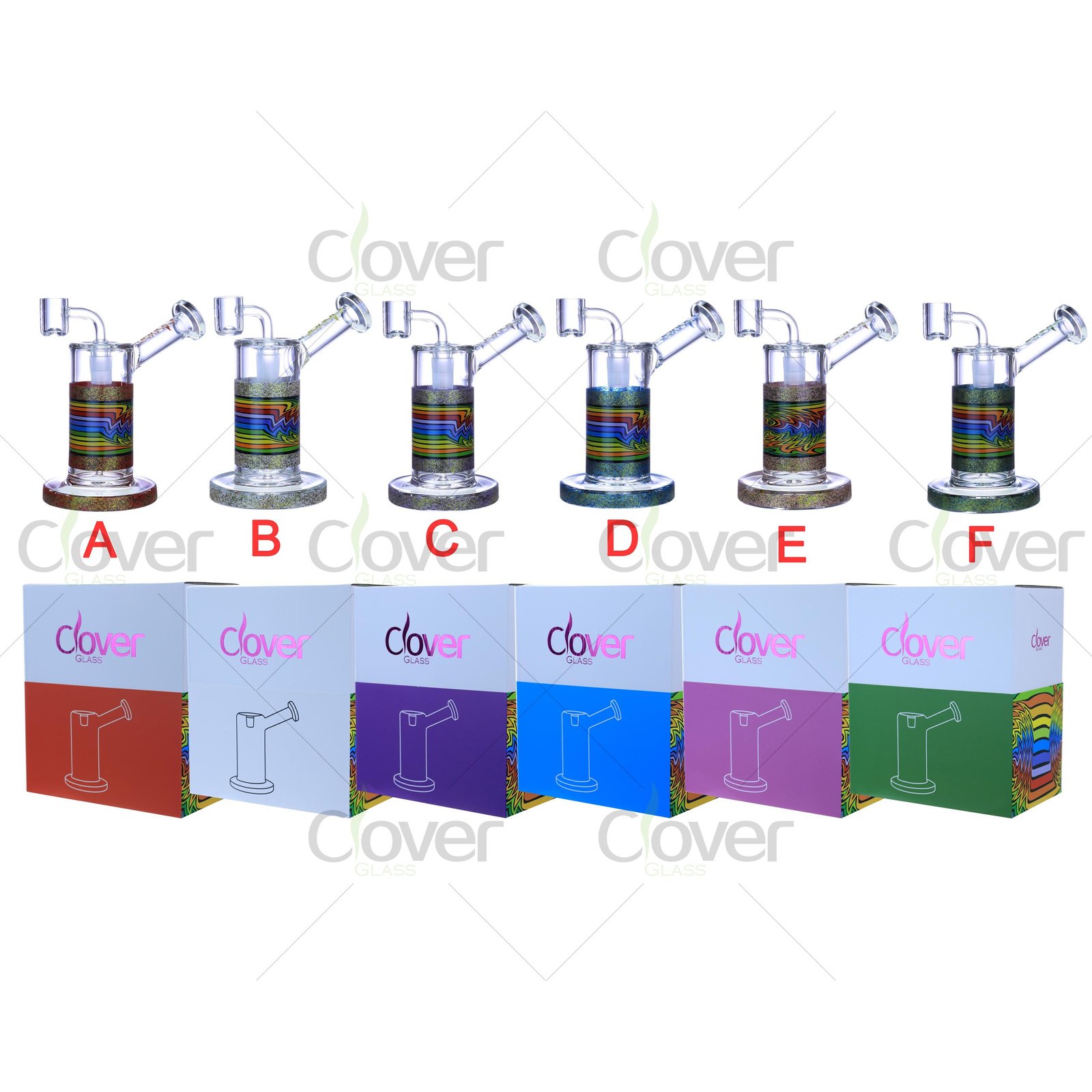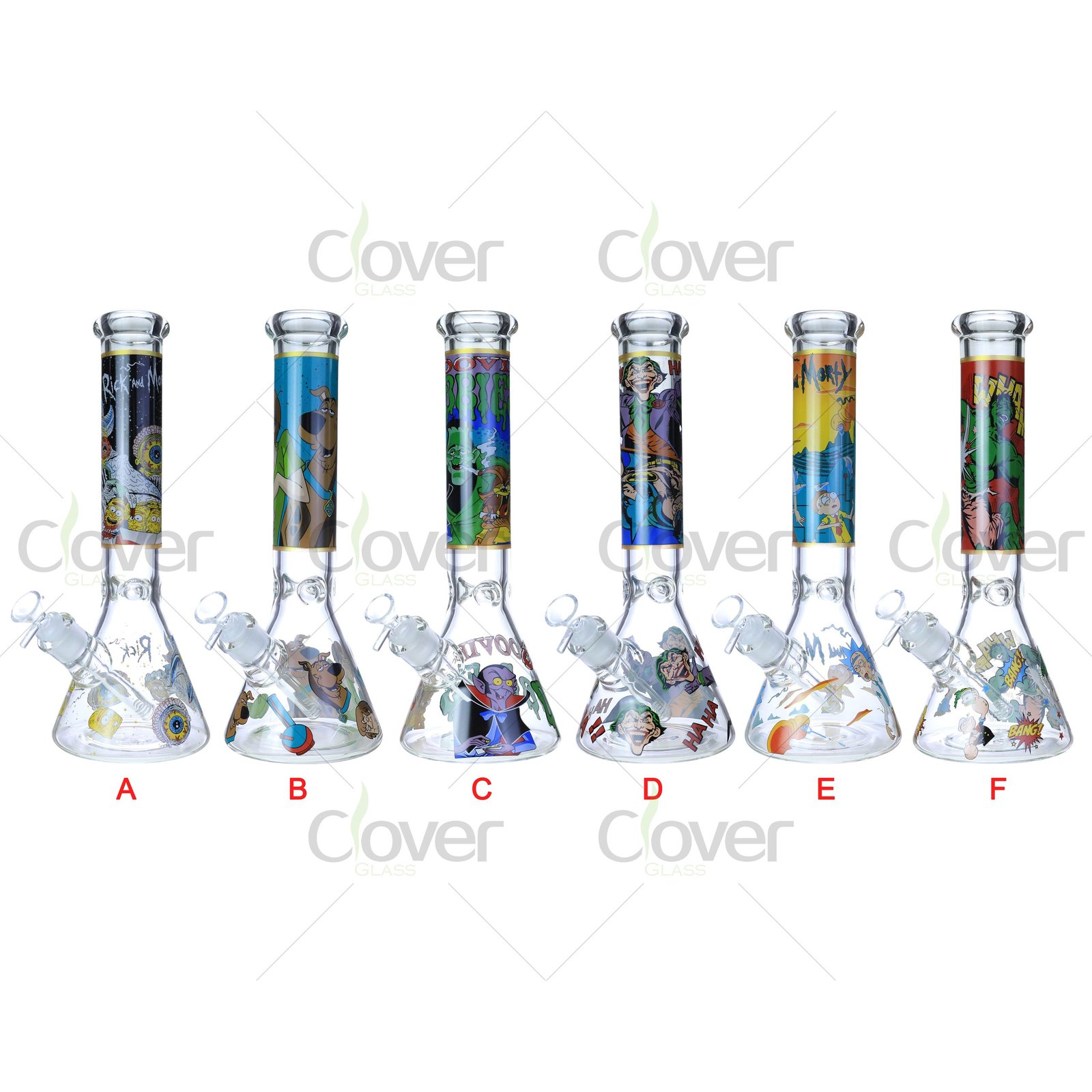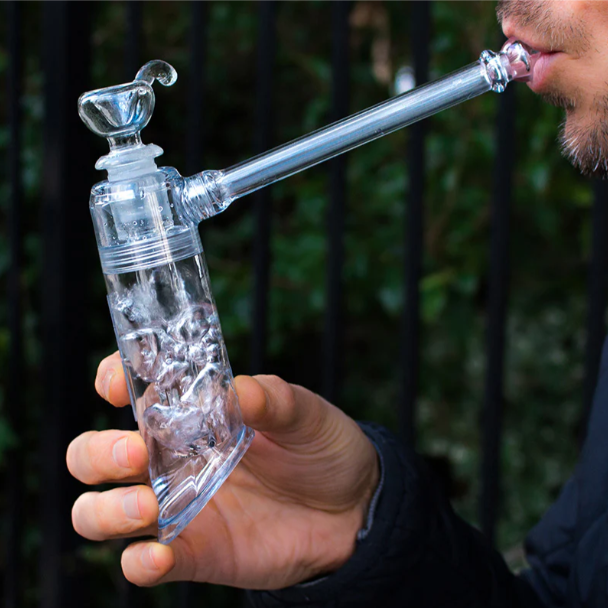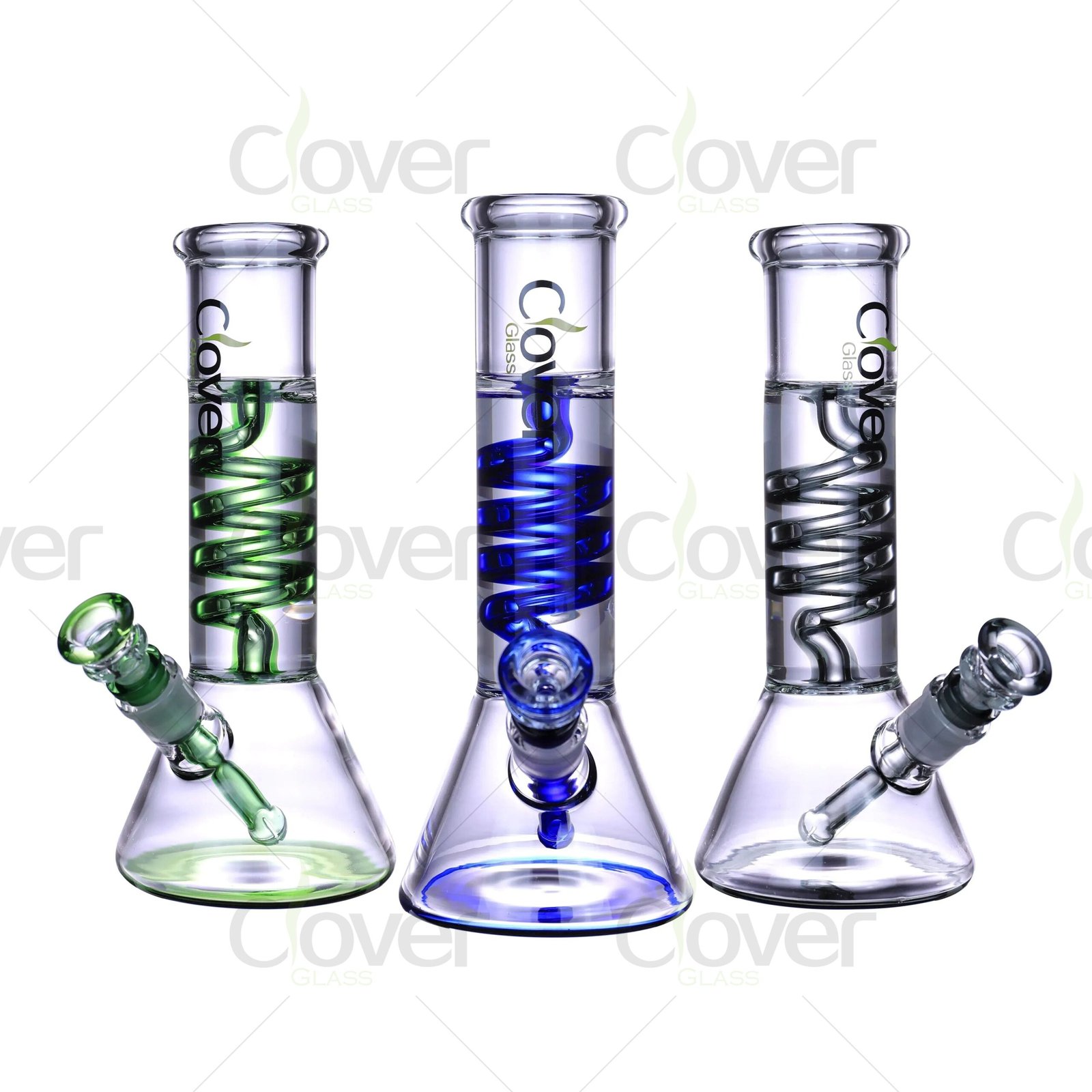Your hits taste harsh, the pull feels tight, and customers keep asking which bong design actually moves air better. Frustrating. Let’s clear the smoke—fast.
Straight-tube bongs send air on a direct, laminar path, while beaker bongs widen the base to slow, swirl, and cool each puff. If you’re chasing crisp flavor and quick clears, the tube wins; if you crave smooth, chilled clouds with rock-solid stability, the beaker steals the show.
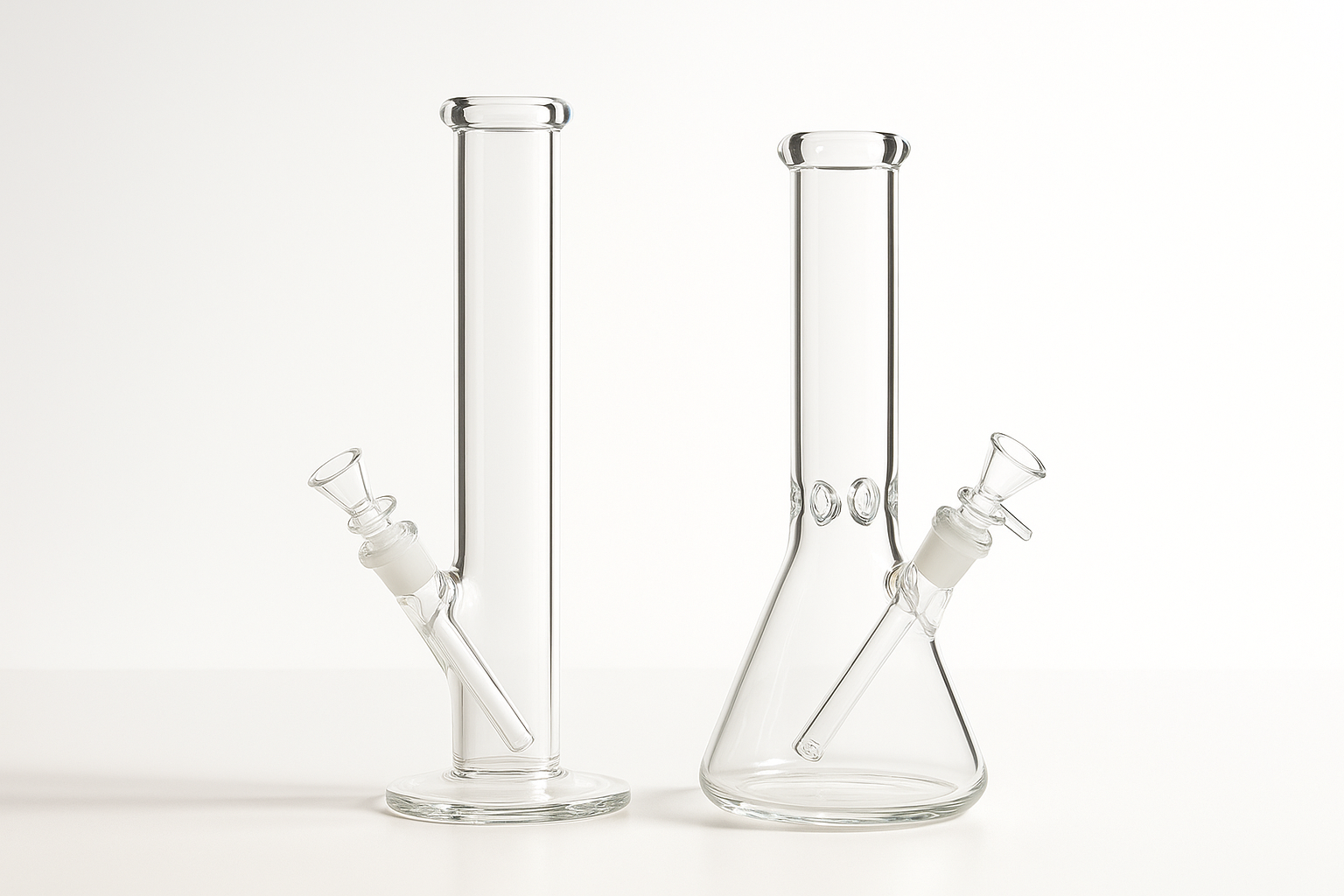
Ready for a side-by-side tour? Let’s dive in.
What is the straight-tube vs beaker question, really?
Both shapes are built from the same borosilicate glass, but their geometry changes how water and air behave.
Straight tubes channel smoke in a narrow cylinder—think soda straw, minimal turbulence. Beaker bongs flare into a conical flask, adding extra water volume and surface area, which forces smoke to detour, scrub, and cool. Fluid-dynamics labs use similar shapes to study laminar versus turbulent flow .
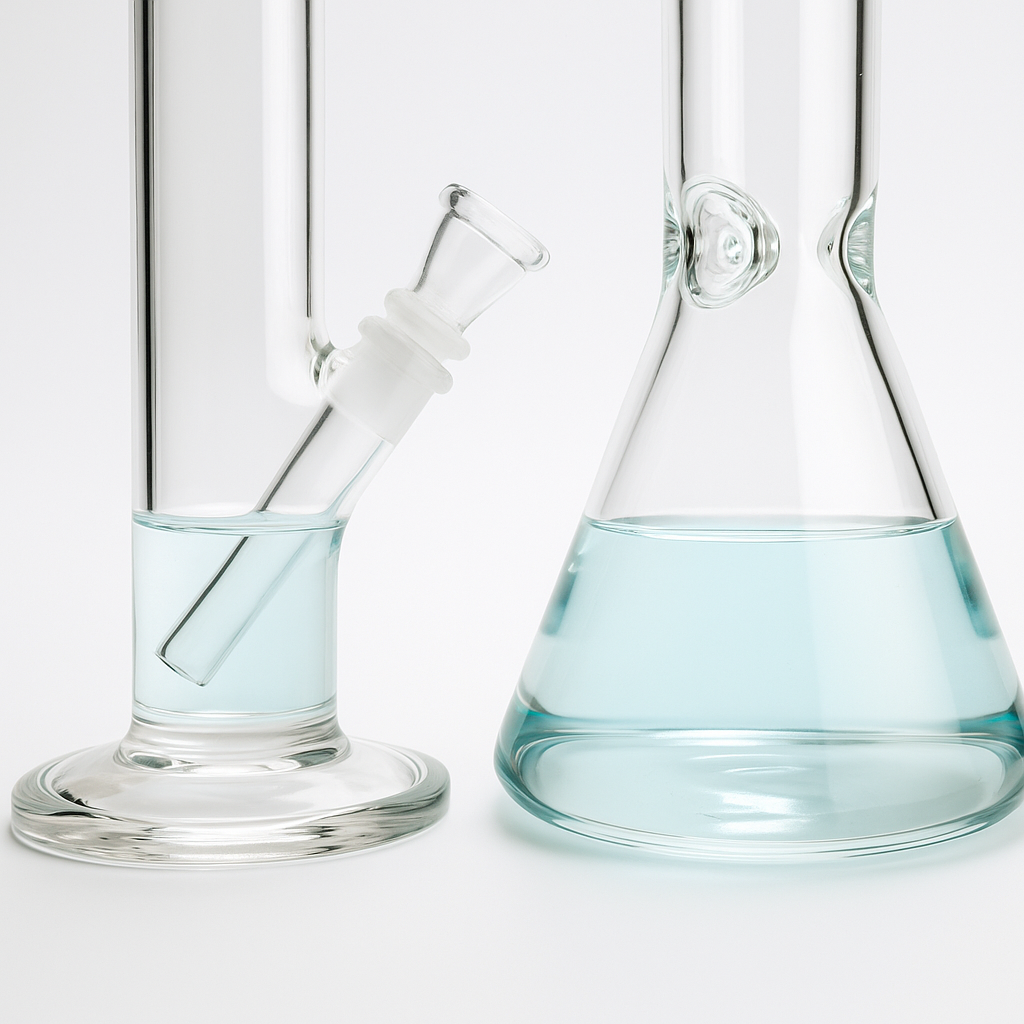
Why does airflow choice matter?
Flavor, throat comfort, and even lung exposure hinge on it. Faster, straighter pulls keep terpenes intact but allow more hot particles. Slower, swirling pulls trap tar in water—one CDC brief links reduced particulate inhalation to longer bubble contact times .
Straight tubes clear in under two seconds, ideal for quick tasting sessions. Beakers take ~30 % longer yet cut smoke temperature by roughly 50 °F in bench tests reported by NASA’s aeronautics lab .
How to choose the right shape?
Match airflow to your ritual.
Quick solo ripper? Grab an 18-inch straight tube with an ice pinch.
Social circle? A 12-inch beaker stays upright on crowded tables.
Mobile buyers? Pick smaller beakers—wide bases won’t tip in a backpack.
Evaluate draw speed, base width, and cleaning ease. Straight tubes rinse in one pass; beakers need a bottle brush, but their weighty bottom survives knocks, say Society of Glass Technology safety notes .
What mistakes should beginners avoid?
- Overfilling water. Extra height in a straight tube can splash.
- Under-packing beakers. Wide chambers need a bit more herb to build density.
- Mix-matching downstem angles. A 45° stem in a straight vase leaks; use 90°.
- Skipping daily rinse. Standing water breeds mold—the NIH flags rapid bio-film growth in warm glassware .

Dive deeper: airflow physics and buyer FAQs
| Factor | Straight Tube | Beaker Bong |
|---|---|---|
| Draw resistance | Low (laminar) | Medium (turbulent) |
| Clear time | 1-2 s | 2-3 s |
| Smoke temp drop | ~70 °F | ~120 °F |
| Base stability | Narrow foot | Wide, anti-tip |
| Cleaning time | 30 s rinse | 60 s + brush |
| Ideal users | Flavor chasers, testers | Casual groups, smooth seekers |
How does water volume affect filtration?
More water = more contact. Beakers hold up to 40 % extra liquid, letting tar stick to bubbles. EPA’s Safer Choice list even rates plain hot water as an effective first-pass cleaner for non-porous surfaces .
Are extra percolators necessary?
Not always. Tubes often rely on diffused downstems; beakers may add a tree perc for finer bubbles. Over-percolation can raise drag, a trade-off highlighted by NORML’s consumer tips on harshness vs. airflow .
Does glass thickness change airflow?
No. Thickness boosts durability but leaves internal diameter unchanged. However, thick-wall beakers feel heavier, which some buyers equate with quality—a trend noted at CHAMPS Trade Shows buyer surveys .
Any health benefits to either shape?
Cleaner hits reduce irritants. NIOSH cautions workers that fine smoke particles under 2.5 µm penetrate deep into lungs . Longer cooling paths in beakers trap more of those bits, but proper maintenance trumps shape alone.
Conclusion
Airflow isn’t magic—it’s geometry. Pick the tube for snap clears, the beaker for plush clouds, and remember: clean glass always wins.

